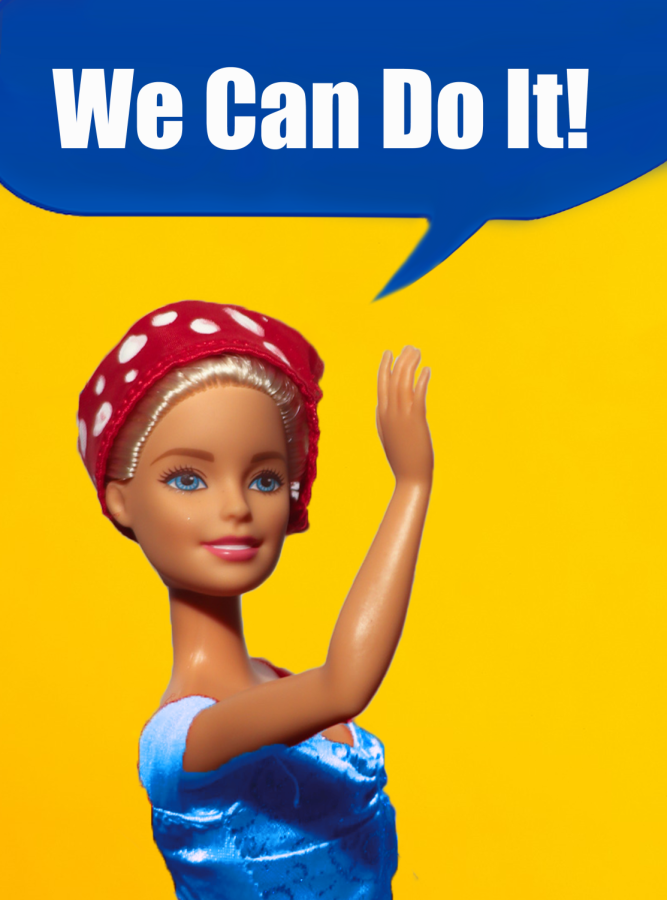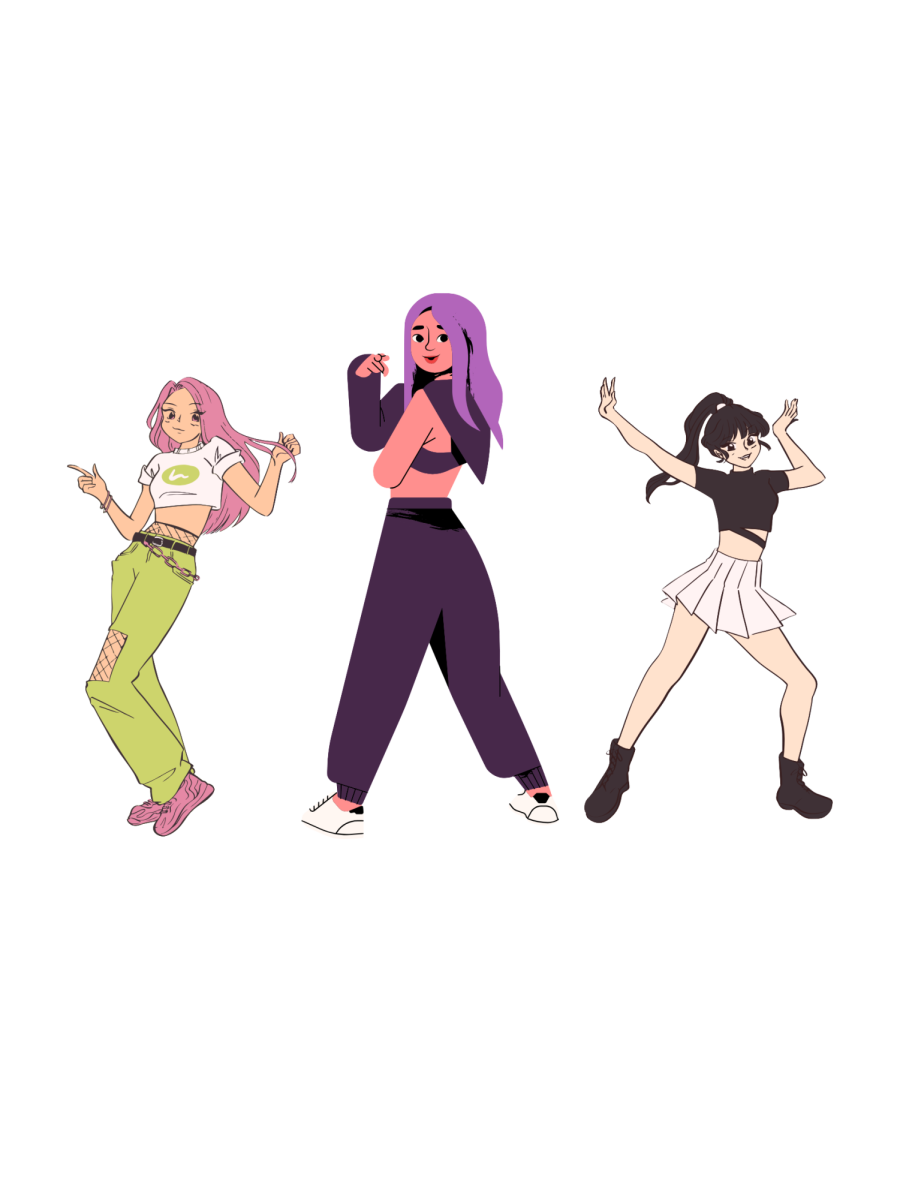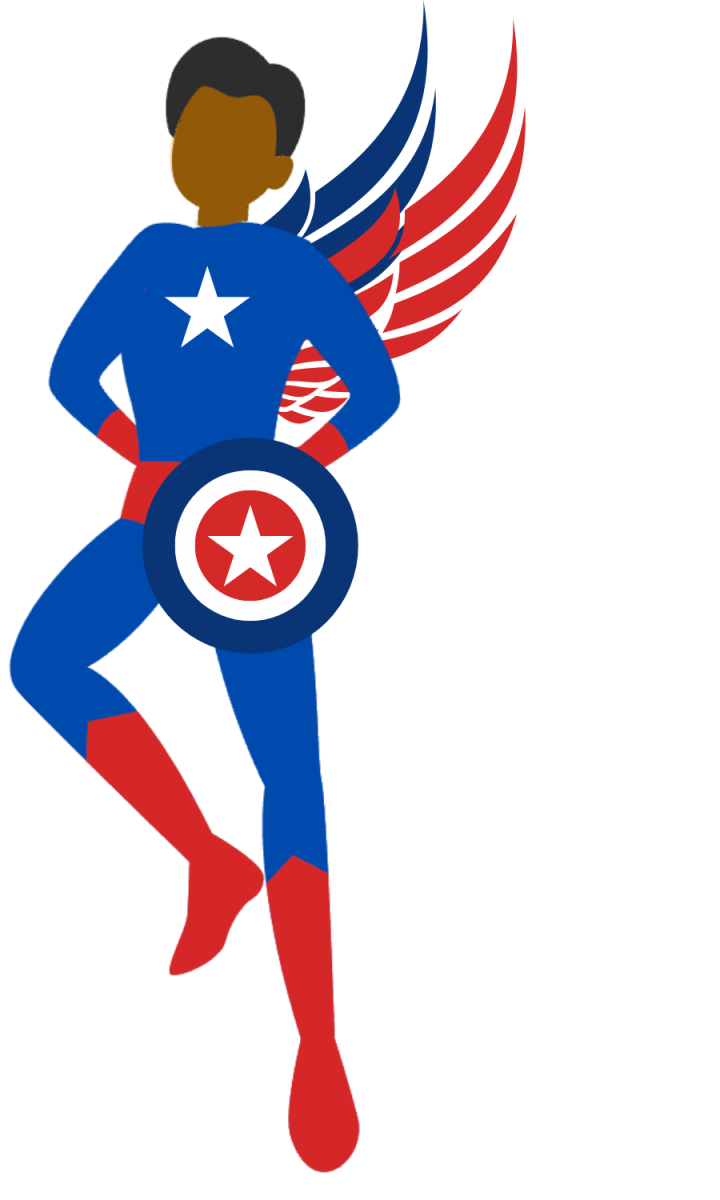When thinking of the color pink, villainy probably isn’t the first thing that comes to mind. But for media producers, the association seems quite easy, considering the constant negative portrayals of feminine traits in TV shows and movies. Feminine women are portrayed as demons disguised in pink, airheads whose only thoughts consist of shopping, or bullies who tear people down with their perfectly manicured nails. This stereotype is rarely defied, with the exception of an unexpected feminist icon: the Barbie doll.
The negative stigma that Barbie shatters stems from internalized misogyny dating back to second wave feminism. Second wave feminism took place in the 1960’s and focused on liberating women from solely domestic roles. The iconic Rosie the Riveter poster, which encouraged women to join the workforce during WWII, marked significant progress towards gender equality. However, it also caused traditional femininity to be seen as disempowered while masculinity was associated with success.
This stereotype lives on in today’s society. A study conducted by the Institute of Labor Economics, titled “Masculine vs Feminine Personality Traits and Women’s Employment Outcomes in Britain: A Field Experiment” found that women displaying feminine traits, such as empathy and loyalty, are 4.3% less likely to gain access to occupations when compared to women who exhibit masculine personality traits, such as ambition and authority.
Additionally, a study from the University of Granada titled “Economic Inequality and Masculinity-Femininity: The Prevailing Perceived Traits in Higher Unequal Contexts are Masculine” found that financial success is associated with masculine traits, while femininity is associated with lower classes.
This association of masculinity with economic and cultural success caused the creation of the “not like other girls” phenomenon, a behavior where women emulate masculine traits and bash traditional femininity. Ellie Watson, former Trinity Film Club President and current film student at Boston University, believes women do this in order to be respected and successful in the workplace.
“If I were to be a girl and insert myself into [a male dominated space], I think I would have to compromise my femininity in order to be taken seriously by them,” Watson said.
This was the beginning of women disavowing femininity as a defense mechanism against sexism. Femininity in movies and shows is rarely portrayed positively, the only exception being Barbie. The majority of hyperfeminine characters, which are characters with exaggerated feminine traits, are depicted as antagonists. This trope appears in almost every quintessential teenage movie–Sharpay Evans in High School Musical, Regina George in Mean Girls and Jennifer Check in Jennifer’s Body.
These characters are created to be hated by audiences–the hyperfeminine villain to the much more relatable anti-feminine protagonist. Anti-feminine characters embody the “not like other girls” trope because their rejection of femininity makes them relatable to audiences. Watson believes Mean Girls is a perfect example of this hyperfeminine antagonist and “not like other girls” hero.
“I think that writing characters like Regina George and the other ones that you mentioned– they’re always supposed to be the butt of a joke instead of genuinely portraying what a girl is like,” Watson said. “And Cady in Mean Girls, she only becomes like the hero when she becomes a little more tomboy-esque. When she rejects being feminine, that’s when she becomes the hero of the story and it’s like, ‘Why? Why do you have to neglect being like a feminine person in order to be taken seriously?”
Watson is excited for the upcoming release of the Barbie movie this July because she said it will counter the harmful stereotype that movies like Mean Girls present. She believes these stereotypes are especially harmful to young and impressionable girls.
“[This stereotype] is really damaging to your self-esteem and your interests growing up,” Watson said. “Especially in like the high school age movies that you’re talking about–that’s when you’re trying to figure out who you are and what you like to do and what drives you. And if you see these female characters and the things that drive them are pleasing men and putting down other girls, it leaves you with a sense that you’re doing something wrong. Is that the only box I’m able to fill?”
Fortunately, Barbie defies these stereotypes and embodies a character who is both feminine and successful. Barbie was first released in the 1950’s when the primary choice of toy for young girls was the baby doll. The prominence of baby dolls represented women’s place in society, confining young girls’ dreams of their futures to motherhood. Ruth Handler, recognizing the lack of a toy that allowed little girls to imagine whatever future they liked, created a toy to fill this niche, named “Barbie” after her daughter Barbara.
As the brand expanded, the Barbie character grew. Now, Barbie has canonically had over 200 careers, including male dominated professions such as computer engineer, boxer and astronaut. Through her various jobs, she shows young girls that they don’t have to reject femininity in order to be successful, as she also canonically owns a pink mansion and enjoys fashion and makeup.
In a society that constantly pigeonholes women into stereotypes, Barbie sends the message that women don’t need to conform to any ideals of what a successful woman should look like. Women can exist as themselves, feminine or not, and be whatever they want to be.
















